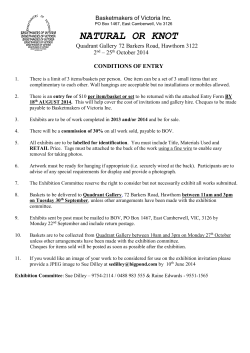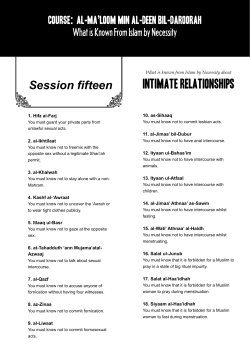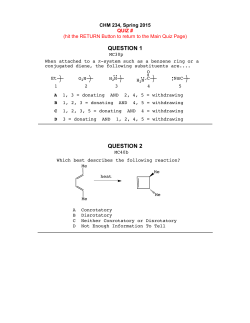
Forbidden City Worksheet
Step 6: Be Creative! Name: Imagine that you are the owner of this object, or the person who made it. Or perhaps you are a museum curator studying it, or a viewer who has something to say about it. Now tell the story of that object. Use your imagination! You could: • write a letter from an official in The Forbidden City, a diary entry, a short story, or a postcard to a friend • draw a comic • create an illustrated poem • or anything else you can come up with that uses this object to tell a story. China and The Forbidden City The exhibition The Forbidden City: Inside the Court of China's Emperors, presented by The Robert H. N. Ho Family Foundation; Lead Sponsor Manulife, gives us a glimpse into the lives of the emperor, his family, officials, and servants, who lived in the world's largest palace in Beijing, China. On the first floor, you will find thousands of objects in the Chinese Galleries that tell the story of 12,000 years of history in China, including the 24 emperors of the Ming and Qing dynasties who called The Forbidden City home. Use this guide to discover what these objects tell us about the lives of the people who used them. Step 1: Explore the Chinese Galleries The Chinese Galleries at the ROM consist of: • The Joey and Tobey Tanenbaum Gallery of China • The Matthews Family Court of Chinese Sculpture • The Bishop White Gallery of Chinese Temple Art • The Gallery of Chinese Architecture. Look through these galleries to find objects you would like to investigate further. Explore and think of stories, people, or ideas that interested and inspired you in The Forbidden City exhibition. Find objects in the Chinese Galleries that convey similar ideas. Learning www.rom.on.ca/school_visits schoolv@rom.on.ca 416.586.5801 Start by the Luohan statue in the Gallery of China Step 4: Analyze the Object Step 2: Choose an object Look out for these popular objects! Look around the gallery and choose an object that interests you to focus your investigation. Bronze ding were used to make ritual offerings of food to the gods or ancestors, and an important symbol of wealth and power. Which of your possessions would you use to show off in the afterlife? Lists the information about your object that you can find on the label: What is it called? When was it made? This delicate picnic basket* was carved from ivory. What would you make a picnic basket out of, and what would you fill it with? What is it made out of? Does the label tell you anything else? Look closely at your object and start to focus on the details. How would you describe your object? You can: write a paragraph make a word list draw a mind map or choose your own way to organize your observations. Can you find the auspicious (or lucky) symbols on the Vase of the Hundred Deer?* Look for the peaches of longevity and the fungus of immortality, and for the seal (like a signature) on the bottom. Oracle bones like this one were used to predict the future. What would you want to know about your future? What mythical creature decorates this Imperial Palace* and shows us that it is the home of the Emperor? *Forbidden City-era objects Learning www.rom.on.ca/school_visits • Look at the objects around your chosen object. • What story is this display trying to tell? As you explore, think of stories, people, or ideas that interested and inspired you in the Forbidden City exhibition. You may want to choose objects in the China Galleries that convey similar ideas. schoolv@rom.on.ca 416.586.5801 Gallery video kiosks and e-labels can tell you more about some objects. Wall signs also contain lots of useful infor- Look for labels in the cases with the objects Use the museum’s free wi-fi to look up more information about Yanluo,* the King of Hell, was the commander of an army of demons who punished the dead. How would you describe his face and posture? How does he make you feel? Step 3: Examine the object • • • • Now that you are more familiar with the object, think about how your object fits in with the rest of the gallery and why this object is here. Some ways to learn more about your object: ROM staff and volunteers are always happy to share what they know about the objects in the gallery. Step 5: Sketch it to Memory Turn away from the object and draw as much of it as you can from memory. Then, turn back and add in any details you forgot. Take a picture or search the web at images.rom.on.ca to compare your drawing to a picture of the object.
© Copyright 2025
![Sample Document [Pick the date] Authored by: Rosemary](http://cdn1.abcdocz.com/store/data/000293489_1-37017495038a3b518a98f665451f96d5-250x500.png)


















